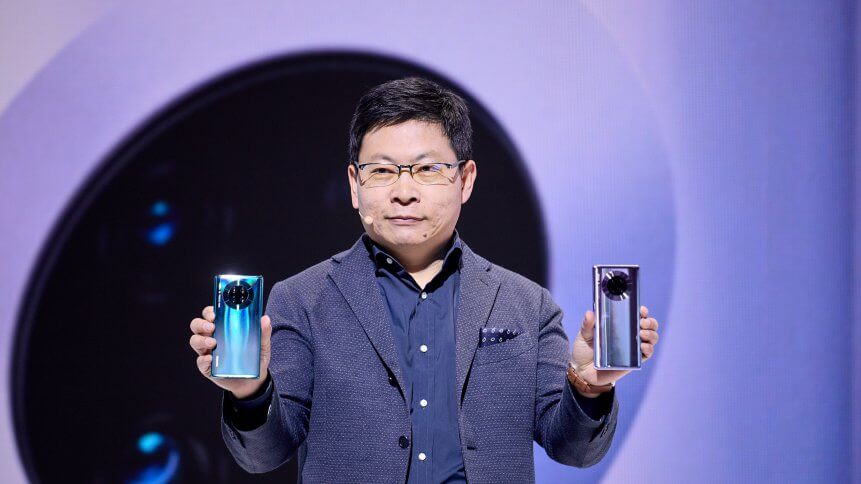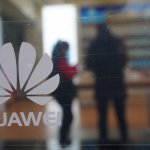Huawei Mate 30 without Google could be mobile industry turning point

At the recent IFA event in Berlin, there were many conversations around how trade wars were harmful to innovation. Any form of isolationism in a connected world prevents technology from helping the global community seamlessly collaborate and push forward together in the name of progress.
READ NEXT

Huawei is not spying on you
For example, the United States continued to increase the pressure on Huawei by slapping a trade ban on the Chinese tech giant. The move prevents more than 130 US companies from selling to Huawei. To round off an already challenging year, Huawei was also kicked out of the cybersecurity forum to comply with US sanctions.
By preventing Huawei access to essential information around security threats, the only real loser is the customers who could end up being exposed to malware. As the escalating trade tensions between the US and China gather pace, it can be hard for everyone to separate fact from fiction.
Despite being accused of placing back doors in its equipment, spying and having security issues that Huawei has always strenuously denied, the tech giant is fighting back. This month’s Atlantic magazine features a full-page ad that attempts to deal with what it calls misconceptions around security threats and replace fake news with facts.

‘Huawei facts’. Source: Neil Hughes
Mate 30 launch
In Munich this week, Huawei attempted to remove its ongoing problems with the US from the conversation and let its innovative technology do the talking. In a two-hour presentation, the audience in the venue and those watching via online streams around the world were treated to a new range of flagship phones.
There was even time to showcase a smart TV with a pop-up camera that makes it easy to make video calls, as well as a new smartwatch too. Despite delivering the wow factor, the launch will sadly be remembered for the few minutes that highlighted how Huawei is unable to obtain the license from Google to add the Play store to the flagship handsets after being put on a trade blacklist in May.
The Mate 30 range will run on the open-source Android operating system. But familiar, and some would argue essential apps such as YouTube, Gmail, and Google Maps will be missing. Although experienced Android fans will know how to sideload the apps onto the handsets, it will be a tough ask for the average user to spend over £1,000 (US$1250) on a device that is missing the apps they use the most.
Users wanting to download popular apps such as Facebook, Instagram, Netflix, and WhatsApp will need to use Huawei’s own app store, which they claim already has around 45,000 apps. After being locked out by Google, the company is also investing US$1 billion to encourage developers to buy into the new ecosystem and give Google a run for its money.
The bigger picture
There is an argument that one of the biggest problems in the current narrative that surrounds every Huawei news story is that we are only discussing the viewpoint here in the west. We need to remember that there is more to Huawei than buyers outside of China.
If we dare to look at the bigger global picture, Huawei is the number two manufacturer of smartphones in the world after leapfrogging Apple. Samsung remains in pole position, but could this change with Huawei’s additional US$100 billion investment in R&D over the next five years.
With sales growing across every continent and making more phones than Apple, Chinese firms are beginning to take a bigger share in the tech industry. According to a report by Canalys earlier this year, China’s smart speaker shipments grew by 500 percent in Q1 2019 alone and overtook the US with a 51 percent market share.
YOU MIGHT LIKE

KingSoft UK launch: Is software China’s hidden export?
With so much at stake in this tech powerplay, both the US and China have accused each other of using technology for spying operations. In yet another game of smoke and mirrors, this is much more about a trade war and protectionism than spying. Even President Trump admitted that Huawei could be included in a deal to end the trade war.
Microsoft’s president has also called on the US to end its ban on it supplying Huawei with Windows software for the Chinese company’s computers too. The reality is both the US and China need each other to thrive in a digital age of collaboration.
When backed into a corner and forced to do more with less, innovation can thrive. What looks like a full-on disastrous worst-case scenario here in 2019 could transform into a turning point in the tech and mobile industry. The rules of the game are changing, and the future might not be a straight battle between Android and Apple.
New beginnings?
We are beginning to see the building blocks of a Huawei alternative to Google’s Android. Although the Chinese tech giant might appear to be wounded at the moment, they are attempting to change the narrative and be in charge of their destiny to prevent this from happening again.
The current trade war could result in the creation of a Chinese-led alternative across a digital landscape that until now has been exclusively ruled by Google and Apple. Huawei is playing the long game, and a robust domestic market will help the company weather the storm and sail towards a new future.
Tempting European markets away from what they know best and onto something new will take time. Here in 2019, it’s easy to get caught up in the negative headlines and mudslinging from both sides. But in ten years from now, will analysts pinpoint this moment as the turning point in our tech history where a relatively new player was forced to create an alternative platform?
Technological innovation spreads opportunities for both people and businesses. A digital iron curtain will do more than harm than good for technological progress. Both countries need each other, and many suspects that a trade deal will eventually happen. But has the damage already been done?
Could this be a turning point that will come back and haunt tech giants in California on the road ahead? It’s much too early to make any such claim. But technology is tearing down geographical barriers, and our history has taught us that nobody can stop the inevitable winds of change.
Remember this moment where Huawei was forced to release a new flagship phone without Google apps. This story has the potential to create a new narrative around mobile technology that will affect every user and business in the future.







